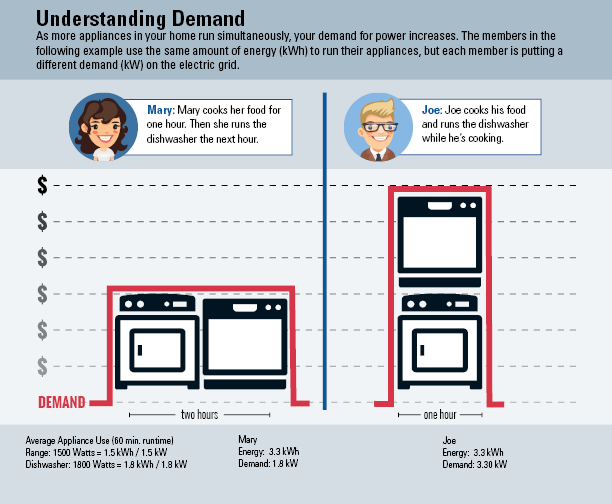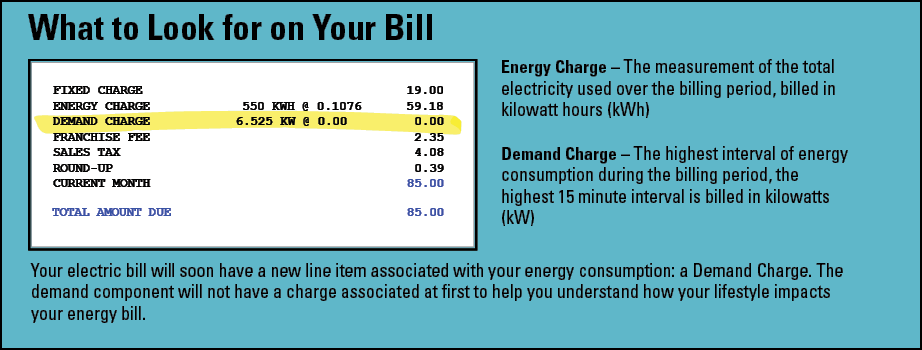Beginning this fall, United Power residential members will begin to see a new line of information on their bill – the ‘Demand Charge.’ For the remainder of 2018, members will see a number of kW multiplied by a zero dollar amount. This number represents the highest level of ‘demand’ that your electric consumption creates on our system, and there is currently no cost assigned to that demand.
While it is simply a way for you to begin understanding how you impact the electric grid today, it will eventually become a way for members to
control and impact their own electric bills in the coming years.
What’s in your rate?
Today your rate incorporates many different costs – the cost of fuels to generate electricity, the cost to deliver the energy to your home, the cost to the electric cooperative to maintain and repair the system, even the cost of billing is included in the rates you pay. Residential members have been paying a blended bill for a long time, because most members use power in a very similar way. However, we now have access to more information about how individual members use power. We have information about every member’s energy consumption in 15 minute increments, and we can actually determine how individual households are impacting our system. This additional information allows us to break apart the various components of your electric bill and charge you more precisely for the two largest components of your bill: your impact on the electric system, or your ‘demand’ on the system, and amount of power you consume – your energy use.
So, what is ‘demand’?
The demand charge that United Power will show on your bill is the highest amount of electricity used during a 15 minute period in that billing month.
Here’s a simple demonstration:
Both Mary and Joe use the same amount of energy, but Joe’s demand is higher since he is using his appliances simultaneously. Mary has a lower demand because she’s staggering the use of her appliances.
It costs more for the cooperative to serve Joe’s home than it does to serve Mary’s because we need to have the ability to produce and deliver the energy for both appliances at the same time. We may have to plan to have additional electric generation plants or increase system resources to meet Joe’s higher demand and that comes at a cost to the entire co-op. Under the new demand rate, if Joe continues to use power the same way his bill will be higher than in the past and Mary will see a savings. While these changes tend to be small for most households, the new rate structure will more closely represent the actual cost to provide that power.

Now is the time to study the demand number printed on your bill and determine how you impact our electric system. In 2019, our members will begin to see a cost attached to the demand portion of the bill, and a corresponding reduction in the cost of energy. While this new rate structure will provide a fairer bill for each of our members, it’s important that you understand how your behavior affects your demand. To help you understand demand, we will be providing a series of articles in upcoming issues of United Newsline and on our website.


